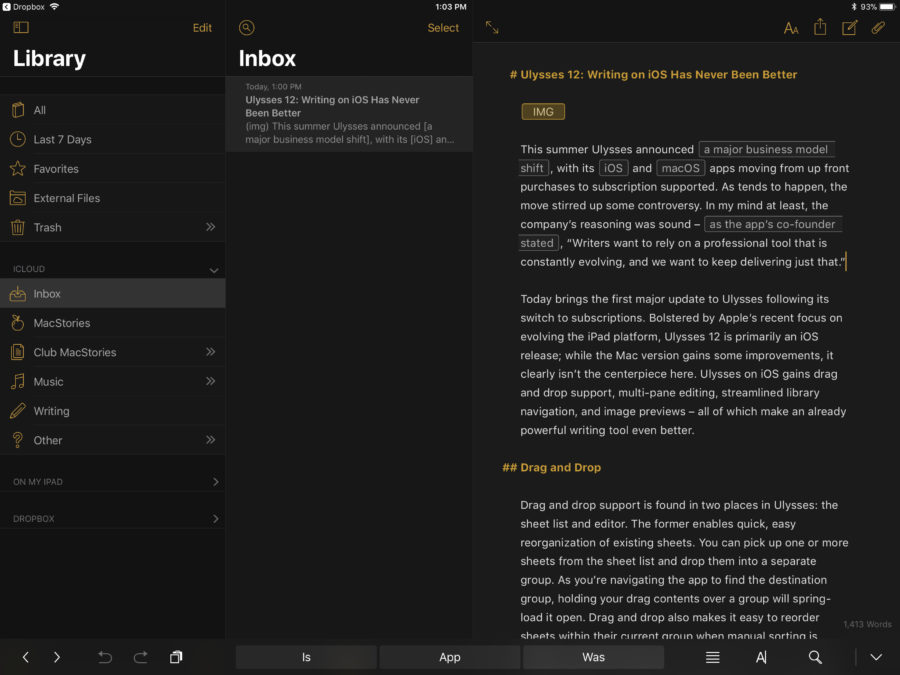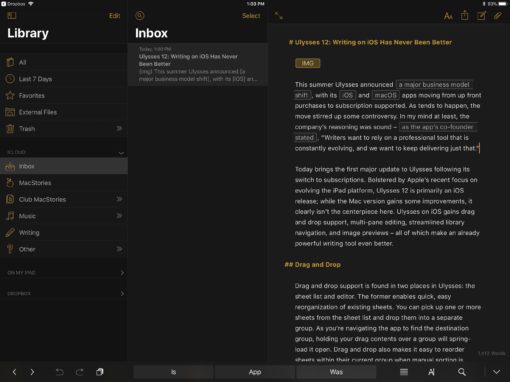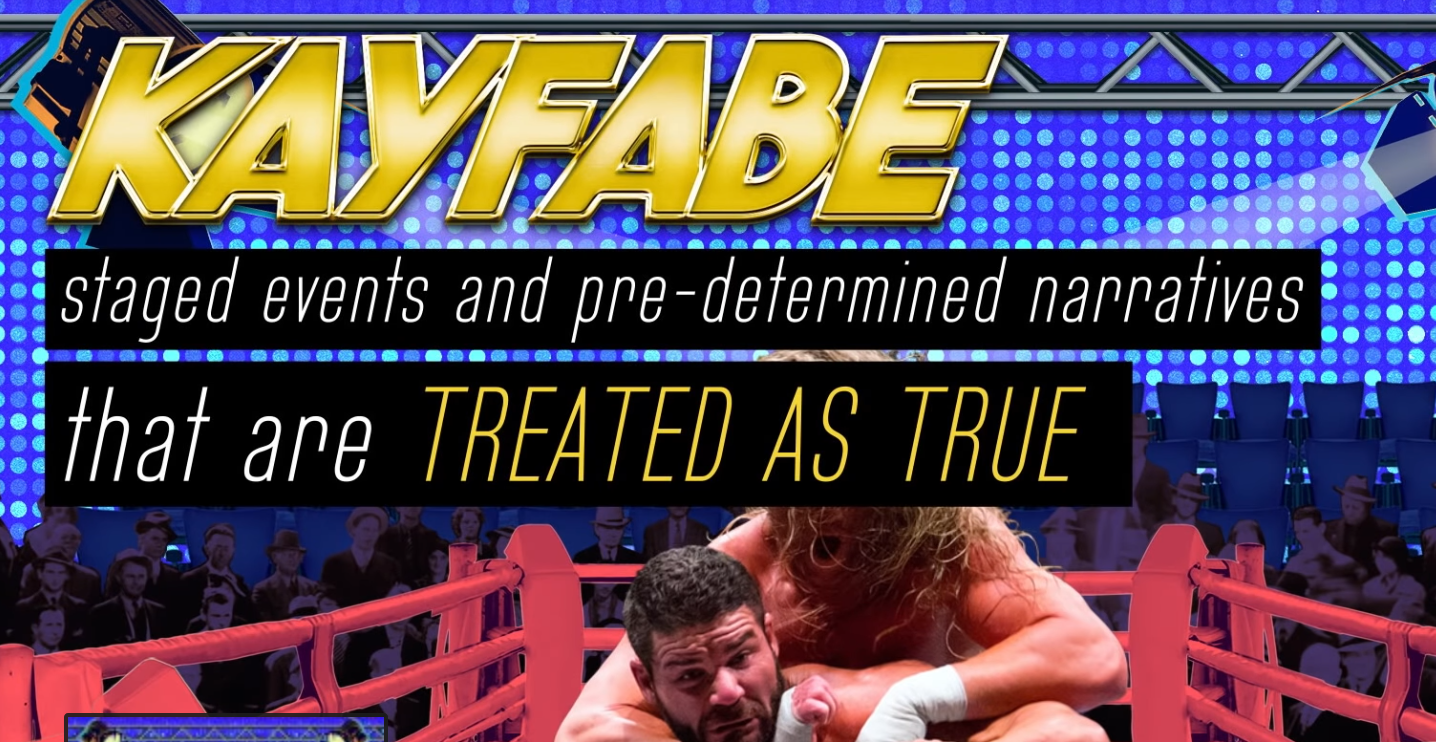
Top 10 content development tools.
A list of the top content development tools that I use to create content. Not in order of preference.
1. Ulysses.
Is there anybody besides me who thinks using Microsoft Word to write most copy is like using a flame thrower to light a cigarette?
I’ve used it for over two decades and I still don’t know half of what it does. All I do know is that it has more than half of what I don’t need.
As a writer, I want to initially work at a “sketch” level for content development. That way I can quickly validate a rough idea rather than wasting time worrying about minutiae like typefaces and formatting.
To avoid all the distracting whistles and bells of MS Word, I’ve tended to work in a plain text editor as the first step of content creation. But that simplicity used to come at the expense of being unable to manage a lot of unfinished ideas. As a plain text editor creates each saved document, one after the other, all those plain text files tended to get lost or winded up littered across my computer’s desktop.
Ulysses is a cloud-based text editor that fixes both problems with simplicity and cross-device content management.

Unlike a basic plain text editor, Ulysses’ iCloud managed content library and drag-and-drop system for arranging content and notes allow me to hold and capture thoughts that are not ready for prime time or a CMS. Ulysses has a “typewriter” mode that creates a zen-like text-only writing and editing screen so I can focus on sketching out my ideas.
When I’m ready to take my “sketches” to the next level, Ulysses is great. It allows formatting for text for ebook manuscripts and it uses Markup language so I can automatically format text and add metadata to immediately post to web pages as HTML and blog posts.
The text from Ulysses also works with one of my favorite writing tools that might surprise you. Apple’s Siri.
2. Siri.
Ok, not directly Siri, more like Siri’s voice via accessibility. I use the text reading capability in my Apple iPhone’s accessibility (started by a two-finger swipe down the top of the phone) to make the voice assistant read blog posts I’ve drafted in Ulysses.
Why? By staring at our own words so long, writers can put themselves in a state of self-hypnosis. A point where we are unable to see glaring typos right in front of us.
When Siri reads your “the” written as “hte” in your copy, you’ll hear it. It’ll catch your attention so you can correct it. Though it’s not perfect, you can hear the cadence and style of your copy in Siri’s voice. A playback, a bit like hearing a song you wrote and produced, allows you to get a feel of the flow of your writing.
3 & 4. Grammerly & Hemmingway

A good editor gives you a kick in the pants and helps you take that extra step to make something that’s good, even better.
Both Grammarly and Hemmingway help me to do that. Both are web-based and downloadable apps that you can paste your text into and they will analyze your content.
The free version of Grammarly will help you focus on detecting grammatical issues like typos, verb use, and spacing. While Grammarly’s paid version can improve your writing style, I like to use it as a second set of eyes on my work when writing emails and short snippets.
Hemmingway.

Editing makes your content crisper, more alive. That’s why I enjoy using Hemingway. The Hemingway Editor cuts the dead weight from my writing. It highlights wordy sentences in yellow and more cringe-worthy ones in red. Designed as an editing app, Hemingway helps you write with power and clarity by highlighting adverbs, passive voice, and dull, complicated words.
5. Camunda Modeler
In my app and user story related work where I create messaging in user stories and a customer journey in digital products, I used to use OmniGraffle to map flows.

Things change and today I use the Camunda Modeler. It’s a freely available application that helps me diagram process and logic flows. It’s particularly helpful in voice/chatbot interaction to help me sync function to messaging around voice response.
6. Trello
For content planning and tracking, Trello is great. I use it to build editorial boards. What is great about Trello is that you can attach dates, images, text, notes to each of your movable cards. And you can share the board with your content team to support content collaboration.
7. Buzzsumo
What’s my client’s industry talking about? What are the topics where people are consuming lots of content? I can look to Buzzsumo to find out. It’s an online search tool to search content trends and see what content in a category is popular. The paid version is really robust, but you can still use the free version to get some guidance on what content consumers want.
8. Pexels.
Free images. Need I say more? A pretty good amount of no-cost royalty-free images. You are not going to find every image you might need for every blog post or post for Instagram, but you won’t be disappointed either.
9. Buffer
If you can post on all the social networks without being a full-time social media manager, please tell me how you got a hold of Dr. Strange’s time stone.
Me? I use Buffer. Buffer is a social media management service. It allows you to add and schedule a post on Facebook, Instagram, Twitter, and Pinterest. The ability to time-shift some postings allow me to focus on my clients’ work without interruption from attempting posts during that time.
Why Buffer over Hootsuite? A little easier and, frankly, a little cheaper.
10. Filemaker
I said and posted on Instagram that “If there is a Hell. It’s certainly filled with spreadsheets.” Any content strategist who has had do a content audit or manage all the content on a complex website, you’re dealt with multilayered spreadsheets.
In the last year, I rediscovered a program that helps make that process easier. Filemaker. A software program for creating databases and linking them to more user-friendly forms and portals.

I have found amazing uses for it as a content strategy tool as I can view, edit, manage and create formulas that can show content in the form of dashboard analytics. It makes for a better, interactive content matrix.
CONTENT STRATEGY CONSULTING
Content strategy is defining today’s successful business and leaving those too slow behind. Looking for more ideas and strategies around content marketing and delivering satisfying digital experiences for your brand, website or mobile application contact me for a free consultation.































